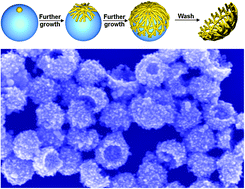
The team used a template-free, liquid-liquid interfacial reaction to build up the gold cups round polymer particles. These so called ‘patchy particles’ are themselves attractive as building blocks for nanostructures due to the directional interactions between the metal patches. Removing the polymers using organic solvent revealed the nanocups with diameters as small as 76 nm. The team demonstrated that the cups can enhance surface enhanced Raman scattering intensity up to the order of 108.
Find out more – download Gong’s ChemComm communication
Want to learn more about surface enhanced Raman spectroscopy? Check out the ChemComm web theme >










